A background plant is anything but a filler. It's a base, providing structure, highlighting surrounding plants and showcasing a little bit of its own special traits. In the garden and as a cut flower, conebush stands out as one of my favorite base plants. A South African native and member of the family Proteaceae
, conebush offers dramatic foliage color year-round. Vivid shades of green, gold, red, pink and orange punctuate the garden throughout the year, adding extra holiday cheer throughout fall and winter.
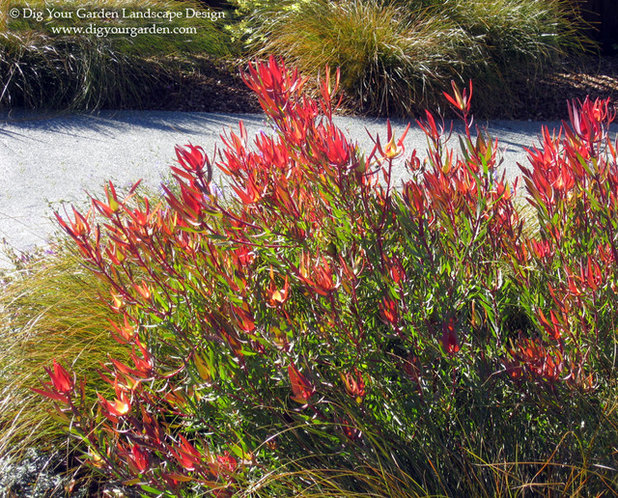
Dig Your Garden Landscape Design
Botanical name: Leucadendron (and hybrids)
Common name: Conebush
USDA zones: Vary by species; most plants can withstand temperatures into the low 20s and can handle a light frost.
Water requirement: Moderate
Light requirement: Full sun to partial shade
Mature size: Varies with species; typically the size of a large shrub or small tree
Benefits and tolerances: Tolerant of drought and coastal winds
Seasonal interest: Most plants flower winter through spring; attractive folilage
When to plant: In spring after the last frost
Shown: Leucadendron 'Safari Sunset'
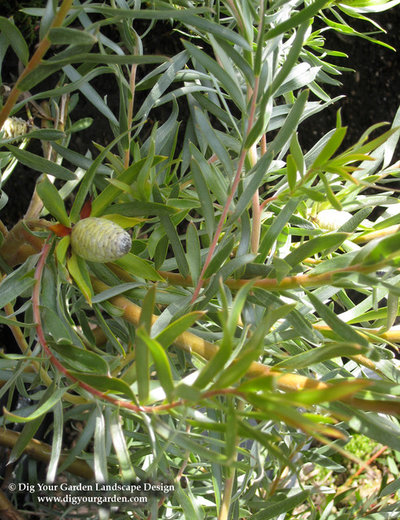
Dig Your Garden Landscape Design
Distinguishing traits. Conebush's distinguishing attributes ring true in the garden as well as in the home. Hybrids are commonplace and come in a wide variety of sizes and colors. Some varieties are shrubbier, while others resemble small trees.
Evergreen, simple leathery leaves in a wide range of hues produce inflorescence (flower clusters) primarily in fall through spring.
Shown: Leucadendron 'Pisa'
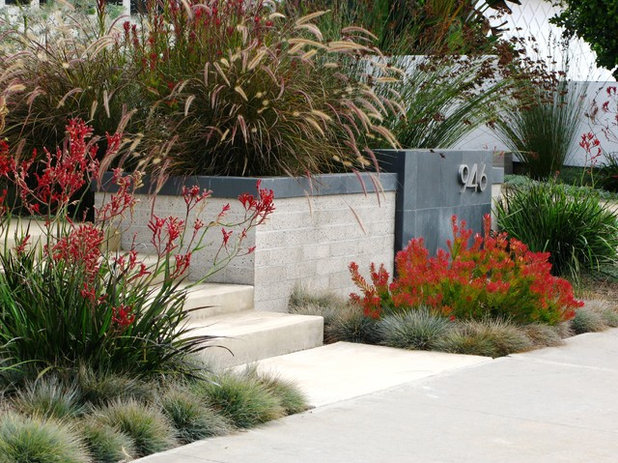
debora carl landscape design
Leucadendron is dioecious, meaning male and female plants are distinct. Female and male floral bracts vary, but foliage and flowers are stunning on both.
Shown: Leucadendron 'Winter Red' and kangaroo paw
(Anigozanthos)
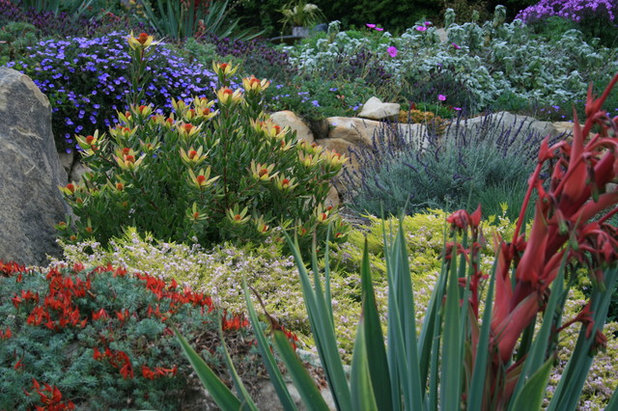
Pat Brodie Landscape Design
How to use it. Conebush is a sophisticated choice for the temperate landscape. Its foliage complements many other plants, and it is commonly used as a background plant.
Its particular growing requirements dictate where your conebush will thrive. Landscape designer Eileen Kelly says that planting conebush on hillsides or slopes aids drainage and also showcases the depth of its foliage. Smaller plants can also be grown in containers. (Keep in mind that conebush does not transplant well.)
Shown: Leucadendron 'Cloudbank Ginny' (in background), surrounded by breath of heaven (
Coleonema 'Sunset Gold'), Beschorneria, parrot's beak
(Lotus berthelotii), silver spurflower
(Plectranthus argentatus) and ground morning glory
(Convolvulus sabatius).
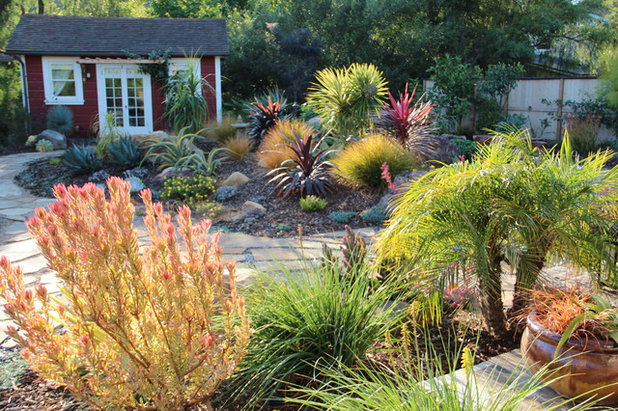
Gardens by Gabriel, Inc.
Planting notes. Leucadendron is sun loving, drought tolerant and an overall lovely shrub. It can be finicky about conditions and is not the easiest plant to grow. Protect it from intense winds. Promote good air circulation. Maintain well-drained soil. “I like to add perlite or small red lava rock to help with drainage,” says Kelly.
It is also particular about soil types. “Calcium and phosphorus can be detrimental to Leucadendrons, so they should
not be fertilized. Adding compost annually around the base provides beneficial nutrients,” says Kelly. Compost is key.
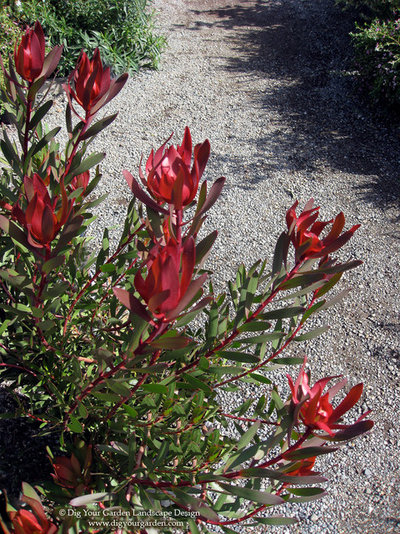
Dig Your Garden Landscape Design
Every spring, before new growth emerges, prune spent flowers to clean the plant up and promote more flowering. Conebush does not like soil disturbance or being transplanted, so you need to trim only spent flowers — don't cut back the entire stem.
Shown: Leucadendron 'Sylvan Red'





